
In meteorology the meteorological variables that determine the weather are continuously measured. The most important variables are atmospheric pressure, humidity, solar radiation, the direction and strength of the winds, etc. Each weather variable provides valuable information about the weather and allows you to predict what the weather will be in the next few days.
Today we are going to talk about hygrometer, the device used to measure humidity. Do you want to know how it works and everything related to the information it can provide in meteorology?
Main features, history and utilities
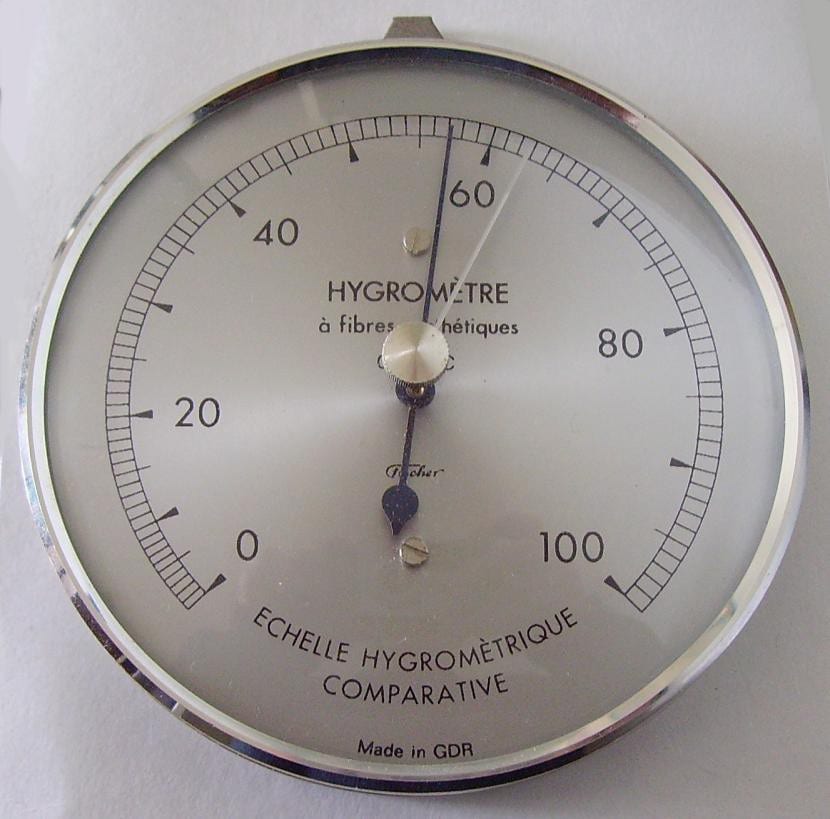
The hygrometer is nothing more than an instrument used to measure the degree of humidity in the air, soil and plants. We remember that humidity is the amount of water vapor in the environment. So that the humidity is saturated, the ambient temperature has to be lower. In this way, the water vapor in the air condenses and gives rise to dew.
The hygrometer is used to measure the amount of water vapor in the air. There are several types of hygrometers depending on their operation, although they all have the same purpose.
The hygrometer was invented by the French physicist Guillaume Amontos in 1687. It was later improved and optimized by Fahrenheit in the mid-XNUMXth century. It uses sensors that perceive and indicate the variation in the degree of humidity, both of a gas and of air in general. The oldest were built with mechanical type sensors. These sensors gave responses to elements sensitive to variations in humidity, such as human hair.
Its applications are very broad. They are used both for the conservation of products that are very vulnerable to excessive humidity, to know the proximity of possible rains and bad weather in general, to have good hygiene knowing the degree of humidity in the premises and rooms. It is also used in many industrial processes that require humidity, such as the manufacture of certain fabrics, paper, and silk.
Necessary concepts about humidity

To understand the correct operation of hygrometers, it is necessary to know some concepts of humidity and how it works.
For example, relative humidity It is a concept that many people are not clear about. Water vapor is generated through the different activities of human beings and, in general, of any living being. In homes, water vapor is generated through cooking activities in the kitchen, showers, perspiration from plants, respiration, etc.
This water vapor that is produced is absorbed by the air depending on the environmental conditions, causing an increase in the moisture content of the air. Therefore, the maximum amount of water vapor that can fit in the air without becoming saturated (that is, condensing) depends on the ambient temperature. The warmer the air, the more water vapor it can hold without becoming saturated with moisture. So that relative humidity is the amount of water vapor in the air in percent.
Another related concept is absolute humidity. It is the amount of water vapor that a cubic meter of air contains and is expressed in grams per cubic meter. Hygrometers are also capable of measuring the saturation point of the environment depending on the temperature. The saturation point is the maximum amount of water vapor that can be present in water at a certain temperature and pressure without the water vapor condensing.
Hygrometer types
Depending on the type of operation of the hygrometer and the characteristics they have, there are different types.
Hair hygrometer
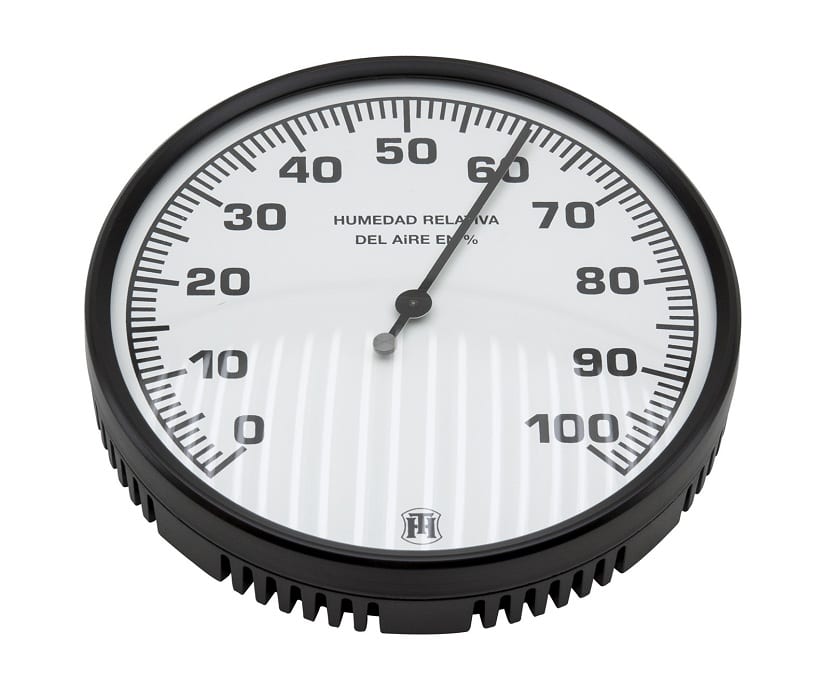
This type of hygrometer it is known as hygroscope. Its operation is very basic. It consists of joining a group of hair grouped in the form of a cord. Hair responds to different changes in humidity that is registered in the air by twisting or untwisting. When this happens, a needle is activated that indicates the amount of humidity in the environment, but is not able to show it in percentages. Therefore, it is not able to measure relative humidity.
Absorption hygrometer
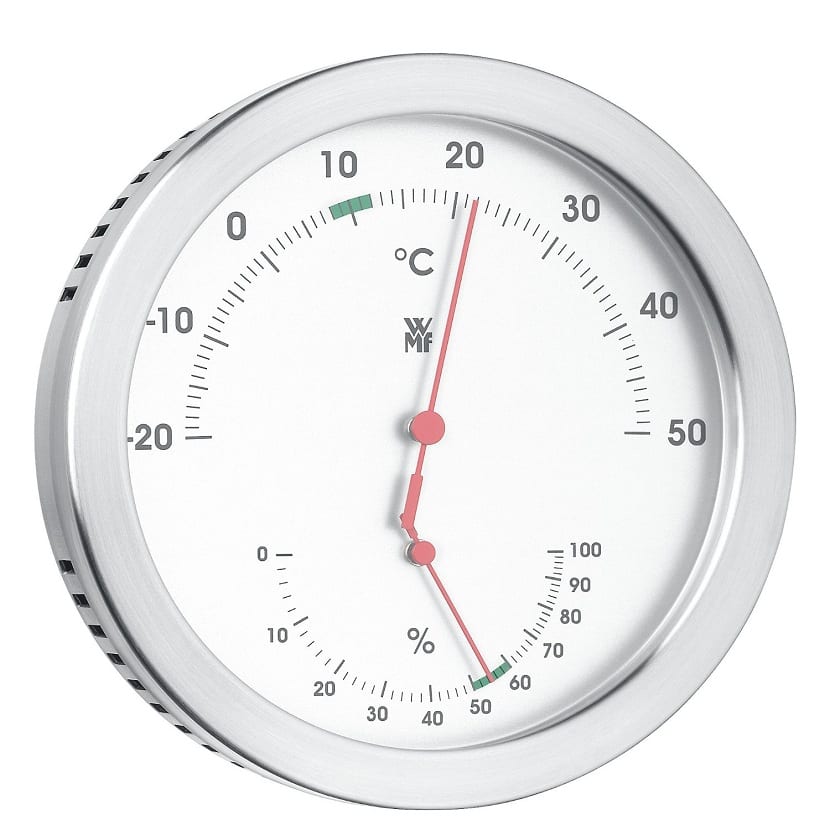
This type of hygrometer works by means of some hygroscopic chemical substances that have the ability to absorb or release humidity from the environment, depending on what there is. Hygroscopic substances are those that bind to the drops of water vapor and that are the ones that form the rain.
Electric hygrometer
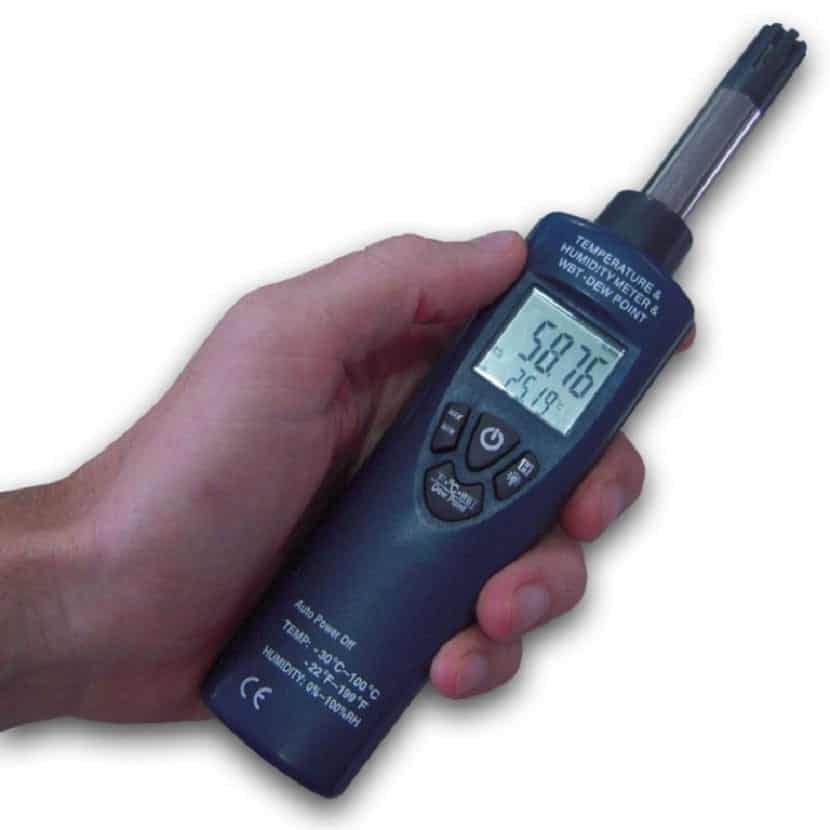
It works with two spiral wound electrodes. Between the two electrodes there is a tissue that is impregnated in lithium chloride mixed with water. When alternating voltage is applied to the electrodes, the tissue is heated and some of the water that is mixed with the lithium chloride evaporates.
At each temperature it establishes a balance between the amount of water evaporates by heating the fabric and that which is absorbed by the humidity of the environment, since it is next to lithium chloride, a very hygroscopic material. As the situation changes, the degree of environmental humidity is established with greater precision.
Condensing hygrometer
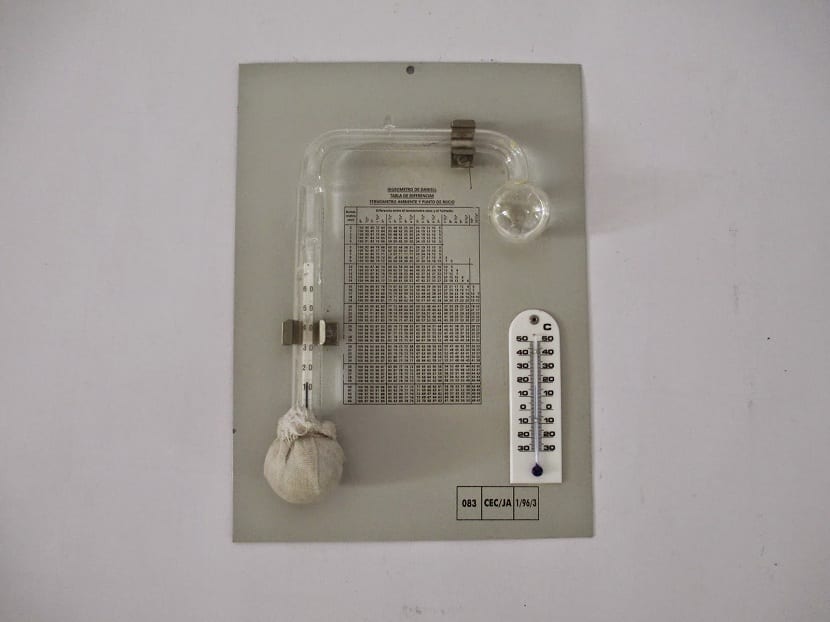
This meter is used to determine the percentage of humidity in the air. To do this, it uses the temperature at which a polished surface tarnishes causing the temperature to be lowered artificially.
Digital hygrometers
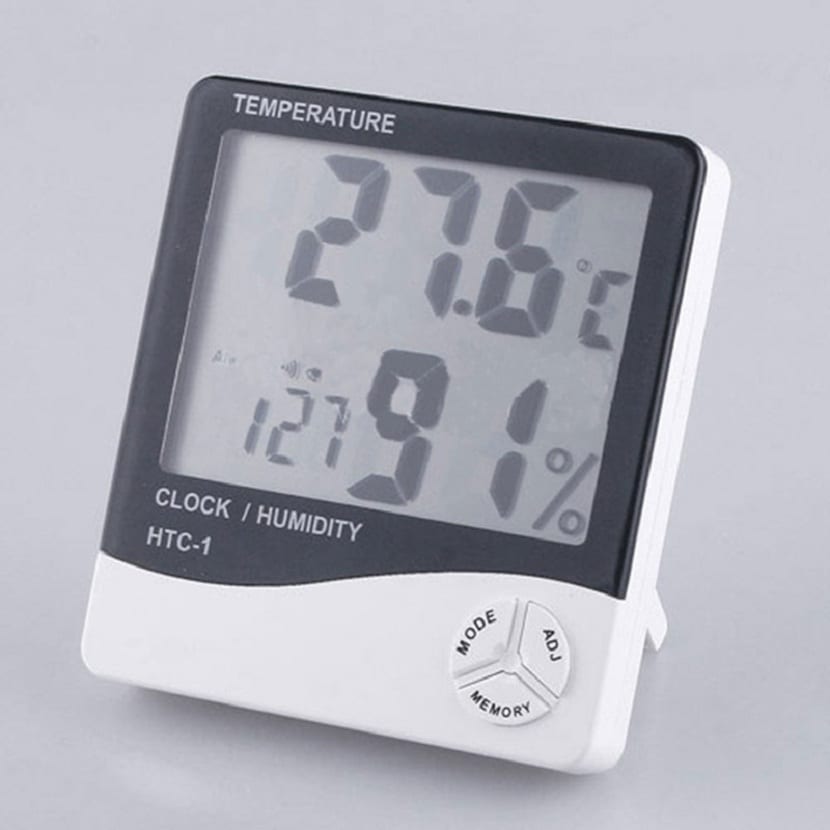
They are the most modern that exist and use electronic circuits to convert the small voltage variations caused by the variation of some physical properties into numbers that are displayed on the screen. Some models of these hygrometers use some substances whose special property is that change color depending on the ambient humidity. With this they can obtain more precise humidity measurements.
As you can see, the hygrometer has many uses in meteorology and not only in it, but in the day-to-day life of many industries, homes and buildings. It is important to know the humidity and what better way than to use hygrometers to measure it.